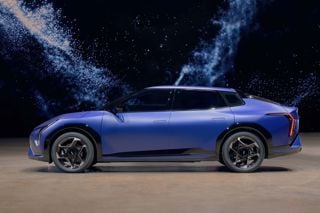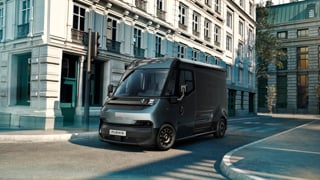By Craig Davy, commercial director at Vehicle Consulting
The government’s announcement that Category 2 and 3 hybrid cars will no longer be eligible for its Plug-In Car Grant seems totally incongruous in terms of environmental and societal policies, CO2 targets and other influences.
Private motorists, company car drivers and fleet managers have been buffeted around by continuously changing messages and strategies for too long.
Hybrids are now widely perceived by many as the obvious step amidst today’s anti-diesel climate and the near future looked very promising thanks to the procession of new hybrid models in the pipeline, such as PHEV iterations of the Honda CR-V, SKODA Superb and Volvo XC40.
The government’s cessation of monetary support for plug-in hybrid vehicles will leave many prospective car leasing and finance customers scratching their heads, with monthly rentals or repayment costs set to rise by around £65 on a 3-year contract.
Between now and 2020, only eligible fully-electric vehicles that can travel at least 70 miles without emitting any CO2 will receive the reduced level of £3,500 support.
Although it’s understandable that the government wants people and businesses to adopt full EVs sooner rather than later, this move is a blow because only a small number of vehicles like the Nissan Leaf and Renault Zoe will be eligible and their compactness may limit interest, as does the Tesla’s price tag.
In other ways, though, the exclusion of plug-in hybrids from the PICG hasn’t come as a surprise. Introduced in 2011, the PICG was never expected to be a limitless pot of gold and was originally widely expected to expire around five years later.
The announced extension from 2016 until now, which saw three categories introduced relating to CO2 emissions, was unarguably welcome but perhaps flawed in a number of ways.
Plug-in cars have been financially attractive amongst company car drivers for tax reasons but they were always relatively more expensive than diesel iterations even after the grant.
It hasn’t been uncommon to garner experiences from drivers of cars like the BMW 330e, Mercedes C350e and Mitsubishi Outlander PHEV where they admit to hardly ever charging them, negating any environmental benefits.
Perhaps the PICG should have been devised more creatively, with financial reward not comprised an upfront grant but linked to proven regular charging and its resulting ‘green’ effects by issuing all PHEV drivers with charge cards linked to their salary and tax records.
It’s widely accepted that roughly a third of UK motorists have to park on the street, while many online forums contain anecdotal evidence of charging points being broken, parked in by ineligible vehicles or generally poorly available.
Additionally, even before WLTP arrived, many people accepted that plug-in cars never achieve the highly-impressive MPG figures quoted even if they’re driven in the required manner, all such factors adding to the list of reasons behind poor PHEV uptake amongst PCH customers in particular.
With would-be plug-in SUV drivers now being treated to a steady stream of exciting all-electric prospects such as the Audi e-tron, Jaguar I-Pace and Mercedes EQC, and smaller electric cars from the Leaf to the Kona and Niro continuously boasting much more useable ranges, maybe the government’s PICG gamble that people will jump straight to EV power will pay off – but with the Brexit clouds looming, I can’t help feeling this is unlikely.




















AMD - 06/11/2018 11:19
A good article, finally putting some sensible narrative to the recent decision. A couple of points stand out in particular, "...drivers of cars like the BMW 330e, Mercedes C350e and Mitsubishi Outlander PHEV where they admit to hardly ever charging them..." and, "...plug-in cars never achieve the highly-impressive MPG figures quoted..." In fact, I'd even go so far to say that many manufacturers have purposely designed cars to take advantage of the grant, with emissions giving an abnormally low BIK band, knowing that these vehicles will rarely achieve the quoted figures and are unlikely to be plugged in as much as they should.